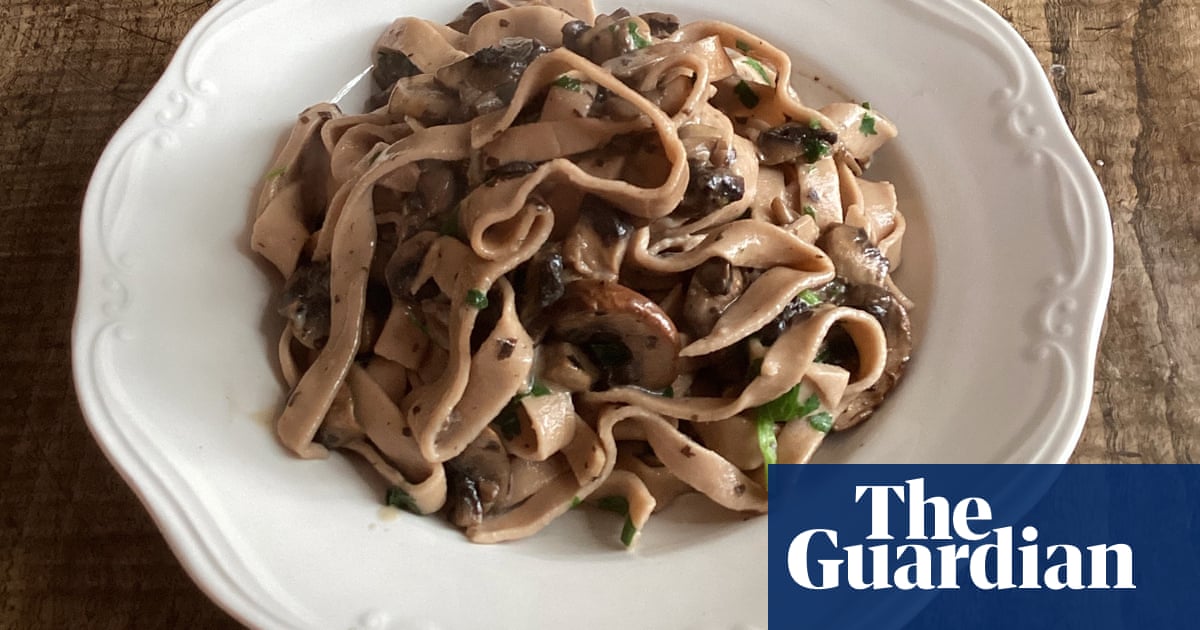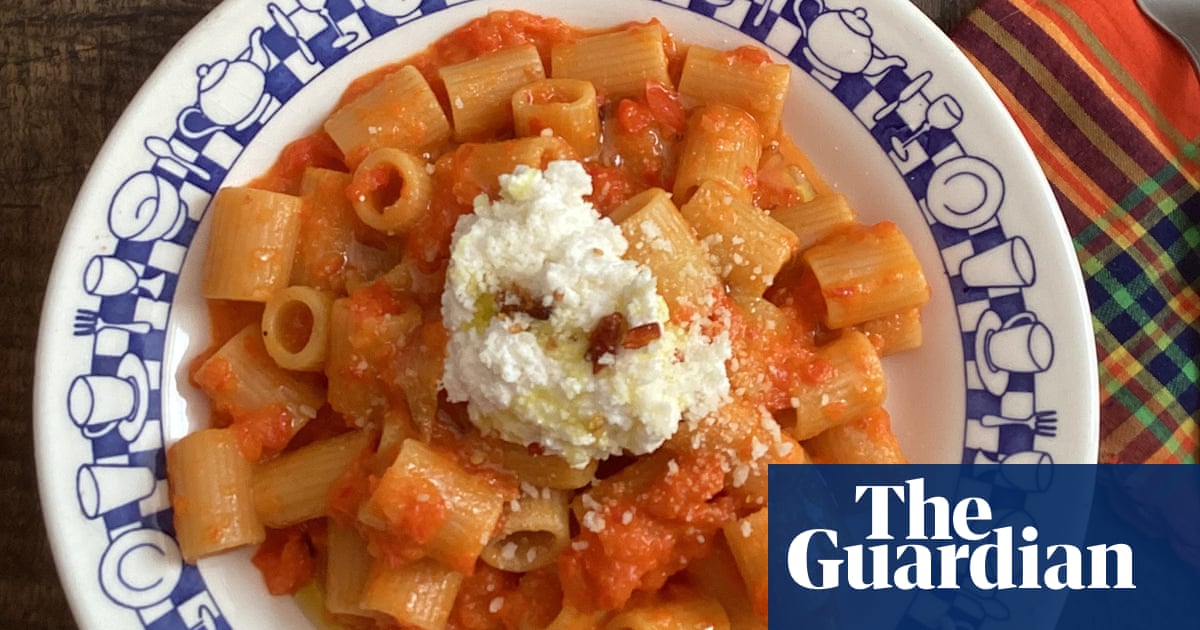
In one of the communal gardens that skirt a dusty, tangerine block near the Palladium in Garbatella is a small forest of tomato vines. Yesterday (and I am writing this on 13 July), the cherry ones were almost all ripe, hundreds of bright, red balls netted in twisting green, while the bigger, heart-shaped ones were still green bags. I curbed my kleptomania, despite the fact several tomatoes were poking so far through the railings that they seemed to be trying to prod me. I thought I had curbed my son’s, too, by shouting so loudly that a woman looked out of her window. But then later, when we sat down for wine and lemonade in a trendy but hugely likable place called La Mescita, I’m sure there was a seed on his lip.
We took another route back to the car so we could enjoy another part of Garbatella, a Roman neighbourhood sometimes referred to as a borgata – a hamlet on the outskirts – and at others a quartiere paese, which translates loosely as “village within a city”. In another garden under a pale yellow lotto (or block), we spotted more bounty in an orto, or vegetable garden, of the kind that brings out deep envy in me: of the tomatoes and peppers, aubergines, onions, as well as of the care the owner took to grow them.
Garbatella was born, officially, on 18 February 1920, part of an ambitious plan of urban extension around the industrial zone of Ostiense. The principal architect was Gustavo Giovannoni, who was also a historian, engineer and urban planner for whom progress, modernity and the changing role of industry in city planning were fundamental. He was also a passionate supporter of the garden city movement, one born out of the work by British urban planner Ebenezer Howard, which called for a return to nature with village-style communities in peri-urban settings, and realised in Welwyn and Letchworth garden cities, and Marino on the northside of Dublin. Along with two other architects and the Istituto per le Case Popolari (a national building society dedicated to low-cost public housing), the team researched and developed an unique style of low-density housing (detached, semi-detached and blocks) grouped around common gardens, using inexpensive local materials – tufa, stone and brick – indigenous materials that gave a sense of identity and place.
If you do have a place to grow vegetables – an orto, or garden, a terrace or huge window box – lucky you, and use whatever is ripe. For those of us who don’t, use whatever you can buy or find to make this pasta all’ortolana – the sauce is an incredibly sociable one.
In another block, kids played on bikes and hoverboards, while a group of women sat on a low wall chatting in the garden – their communal piece of what Howard described as this “beautiful land of ours, with its canopy of sky, the air that blows upon it, the sun that warms it, the rain and dew that moisten it”.
Pasta all’ortolana – pasta with lots of vegetables
Remember to cut the vegetables so they mirror the pasta shape you’ve chosen, and that the cheese here is not just an ingredient, but an edible concierge who makes sure everything comes together.
Serves 4
1 red onion, or 1 small leek
1 carrot
1 stick celery, destringed
1 courgette
1 small aubergine
1 small red pepper
1 handful sweet cherry tomatoes
400g-500g dried pasta (linguine, spaghetti, fusilli, farfalle, mezze maniche)
6 tbsp olive oil
1 pinch red chilli flakes
Grated parmesan or pecorino, plus extra to serve
1 handful basil
Cut the vegetables according to the pasta shape you are using: so, long, thin strips if you are using long pasta, or small dice if you are using short. For all shapes, quarter the tomatoes.
Put the water on to boil for the pasta. Cover the base of a large, deep frying pan with oil over a medium-low heat, add the onion, carrot and a pinch of salt and cook, stirring regularly, for about seven minutes. Add the courgette, aubergine and pepper, cook, stirring, for five minutes, then add the tomatoes and chilli flakes. Stir and squash the tomatoes with the back of the spoon, then leave to cook while you add salt to the boiling water and cook the pasta.
Once the pasta is ready, drain or lift it directly into the vegetable pan, add a handful of the grated cheese and the basil, and toss everything well. Serve with more cheese for those who want it.












